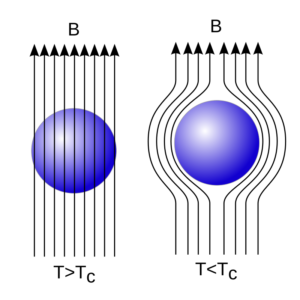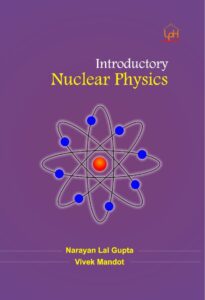Thomson’s parabola method
Positive ray analysis
- This method is used to find the charge to mass ratio.

Thomson parabola method
- T = Discharge tube, the pressure of gas in this tube is kept 0.01 mm of Hg
- E = Capillary tube
- C = Cathode, which is perforated with an extremely small holes
- W = Water jacket, used to cool the cathode
- A and B = Metallic plates, the electric field is applied between these plates
- N and S = North and south poles of a heavy magnet
- K = Highly evacuated camera
- P = Photographic plate
- R = Liquid air trap, used to keep the pressure in K quite low
Working
- To ensure the supply of the gas, a steady steam of the gas is allowed to pass through E and after circulating the tube, it is escaped through M.
- The positive ion produced in T move towards C.
- The ion which reaches C axially. pass through its fine hole in the form of narrow beam.
- After crossing C, the parallel beam of ions enters into the electric and magnetic field.
- The electric field is perpendicular to the direction of ions.
- After it the beam enters into K and finally it is received on P.
- When the photographic plate P is exposed, we get a series of parabolas.
Theory
- Let m, q and v are mass, charge and velocity of positive ions respectively.
- When no field is applied, then these ions will strike at point O.
- Here O is un-deflected spot.
Action of electric field (E)
- Let l = length of path of positive ions over which the electric field is applied.
- Force on particle due to electric field E, Fe = qE
- Now, acceleration on particle, a = qE / m
- Time taken by particle to cross electric field, t = l / v
- Since u = 0, and a = qE / m, therefore
- Displacement of particle
- After crossing E, the ion moves in a straight line, and strikes at a point on photographic plate, which is at a distance x from O
Action of magnetic field (B)
- Let the magnetic field B is applied in the same direction as E and over the same length l.
- Due to magnetic field, the positive ions will deflect, but their deflection will be at right angle to the deflection of ions due to electric field.
- Let due to B, the positive ions strikes the plate at a distance y from O, and OY ⊥ OX.
Fm = qvB
∵ a՛ = Fm / m
∴ a՛ = qvB / m
- Displacement
Action of combined electric (E) and magnetic field (B)
- For it we eliminate v from x and y.
- If E and B are kept at a constant value, and if q/m is constant, then
- This is equation of parabola. It means the motion of a charged particle in electromagnetic field will be parabolic in nature.
- Since the equation of y2 / x is independent of v, so the particle of same q/m, but of different v will fall on the different points of same parabola.
- The position of any individual particle will depend on v.
- The entire parabola is a velocity dispersion or a velocity spectrum.
- Since this equation depends on q/m, so the ions of different q/m will lie along the different parabola.
To know about Thomson parabola method in detail click here.


